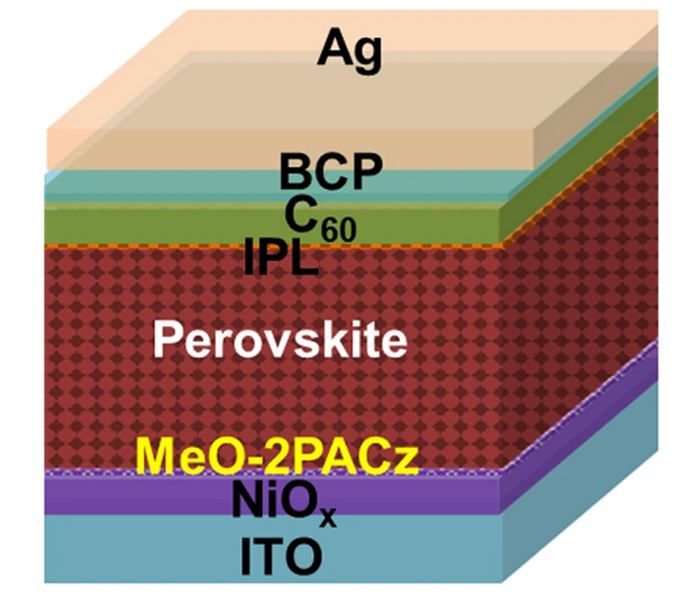Researchers at Japan's National Institute for Materials Science (NIMS) have fabricated a solar cell with a “n-i-p” layout and a perovskite material that doesn't contain methylammonium (MA) molecules. These molecules have intrinsic thermal instability and contribute to increasing the typical thermal instability of perovskite PV devices.
In n-i-p or “inverted” architecture, the solar cell is illuminated through the electron-transport layer (ETL) side; in the p-i-n structure, it is illuminated through the hole‐transport layer (HTL) surface.
The scientists said they built the cell with a new bond/charge regulated defect passivation technique consisting of introducing bifunctional molecules onto the perovskite absorber. “We demonstrate that the different molecular properties lead to distinct differences in the film growth, material distribution, and device characteristics,” they explained. “The bifunctional molecular passivation significantly affects the film morphology and surface chemistries by their basicity and adsorption energy.”
They used, in particular, molecules with an alkyl core known as piperazine dihydriodide (PZDI), which they said mitigates surface and bulk defects, while modifying surface chemistry or interfacial energy band.
The group designed the cell with an indium tin oxide (ITO) substrate, a hole transport layer (HTL) made of nickel(II) oxide (NiOx), a dimethoxy carbazole (MeO-2PACz) layer, the perovskite absorber, an interfacial passivation layer (IPL) based on the bifunctional molecules, an electron transport layer (ETL) based on a buckminsterfullerene (C60), a bathocuproine (BCP) buffer layer, and a silver (Ag) metal contact.
Tested under standard illumination conditions, a 1cm2 solar cell built with this configuration exhibited a power conversion efficiency of 23.17% ad a low open circuit voltage deficit of around 0.327 V. The academics also found the device showed negligible J-V hysteresis and “superior” operational device stability under heat and humidity stress compared to control devices.
They presented the new cell design in the study “Defect passivation in methylammonium/bromine free inverted perovskite solar cells using charge-modulated molecular bonding,” published in nature communications. “These results indicate the surface treatment with PZDI is propitious for defect passivation due to stronger localized nitrogen bonding in halide perovskite film and hence leads to the superiority of device performance.”
In October 2022, the NIMS unveiled a perovskite solar cell without MA to improve the device’s thermal stability. The scientists used pentafluorophenylhydrazine (5F-PHZ) instead of MA for the interfacial passivation of the perovskite layer and built a cell with a p-i-n device structure and an area of 1 cm2.
This content is protected by copyright and may not be reused. If you want to cooperate with us and would like to reuse some of our content, please contact: editors@pv-magazine.com.




By submitting this form you agree to pv magazine using your data for the purposes of publishing your comment.
Your personal data will only be disclosed or otherwise transmitted to third parties for the purposes of spam filtering or if this is necessary for technical maintenance of the website. Any other transfer to third parties will not take place unless this is justified on the basis of applicable data protection regulations or if pv magazine is legally obliged to do so.
You may revoke this consent at any time with effect for the future, in which case your personal data will be deleted immediately. Otherwise, your data will be deleted if pv magazine has processed your request or the purpose of data storage is fulfilled.
Further information on data privacy can be found in our Data Protection Policy.